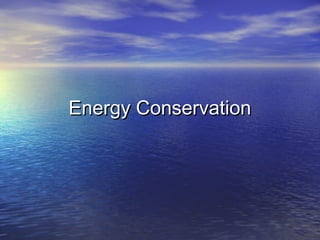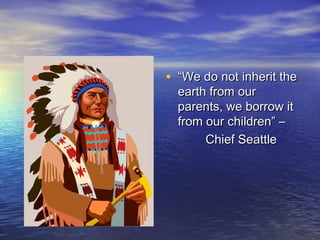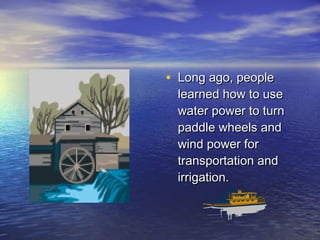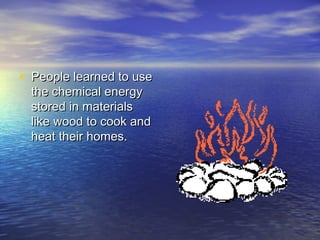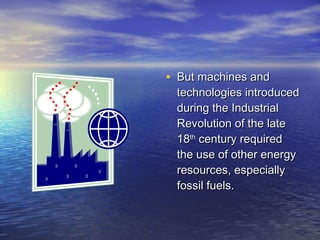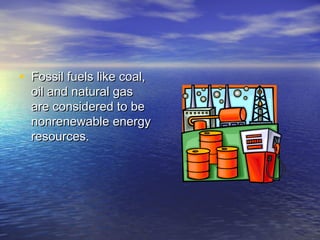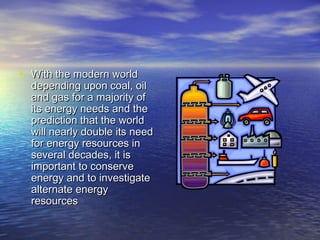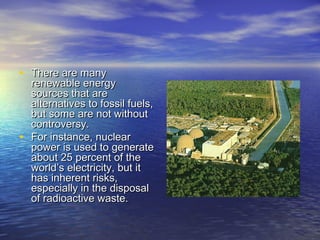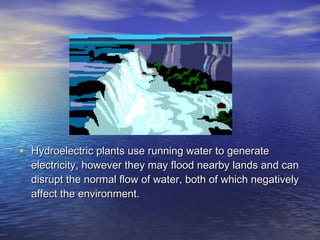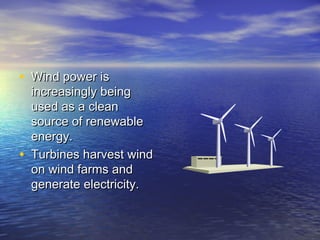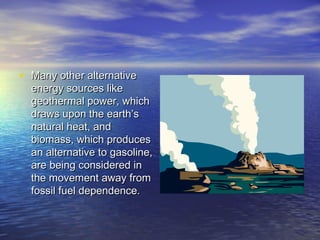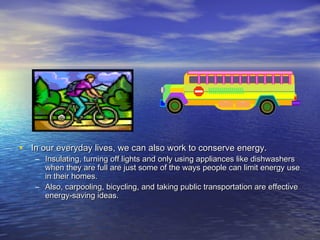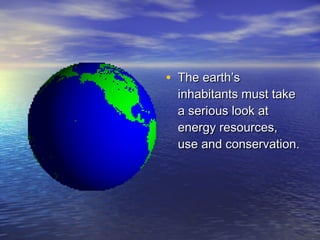Energy conservation
- 2. • “We do not inherit the earth from our parents, we borrow it from our children” – Chief Seattle
- 3. • Energy use has changed a great deal since people relied solely on the sun, their own strong bodies or beasts of burden as energy resources.
- 4. • Long ago, people learned how to use water power to turn paddle wheels and wind power for transportation and irrigation.
- 5. • People learned to use the chemical energy stored in materials like wood to cook and heat their homes.
- 6. • But machines and technologies introduced during the Industrial Revolution of the late 18th century required the use of other energy resources, especially fossil fuels.
- 7. • Fossil fuels like coal, oil and natural gas are considered to be nonrenewable energy resources.
- 8. • Our fossil fuel reserves formed over millions of years from decaying plants and animals. • As we use them up, they will not be replenished in our lifetimes.
- 9. • With the modern world depending upon coal, oil and gas for a majority of its energy needs and the prediction that the world will nearly double its need for energy resources in several decades, it is important to conserve energy and to investigate alternate energy resources
- 10. • There are many renewable energy sources that are alternatives to fossil fuels, but some are not without controversy. • For instance, nuclear power is used to generate about 25 percent of the world’s electricity, but it has inherent risks, especially in the disposal of radioactive waste.
- 11. • Hydroelectric plants use running water to generate electricity, however they may flood nearby lands and can disrupt the normal flow of water, both of which negatively affect the environment.
- 12. • Wind power is increasingly being used as a clean source of renewable energy. • Turbines harvest wind on wind farms and generate electricity.
- 13. • Solar power is a promising, renewable energy resource than can be turned into electricity, and it is used in many toys and even home heating.
- 14. • Many other alternative energy sources like geothermal power, which draws upon the earth’s natural heat, and biomass, which produces an alternative to gasoline, are being considered in the movement away from fossil fuel dependence.
- 15. • In our everyday lives, we can also work to conserve energy. – Insulating, turning off lights and only using appliances like dishwashers when they are full are just some of the ways people can limit energy use in their homes. – Also, carpooling, bicycling, and taking public transportation are effective energy-saving ideas.
- 16. • The earth’s inhabitants must take a serious look at energy resources, use and conservation.
